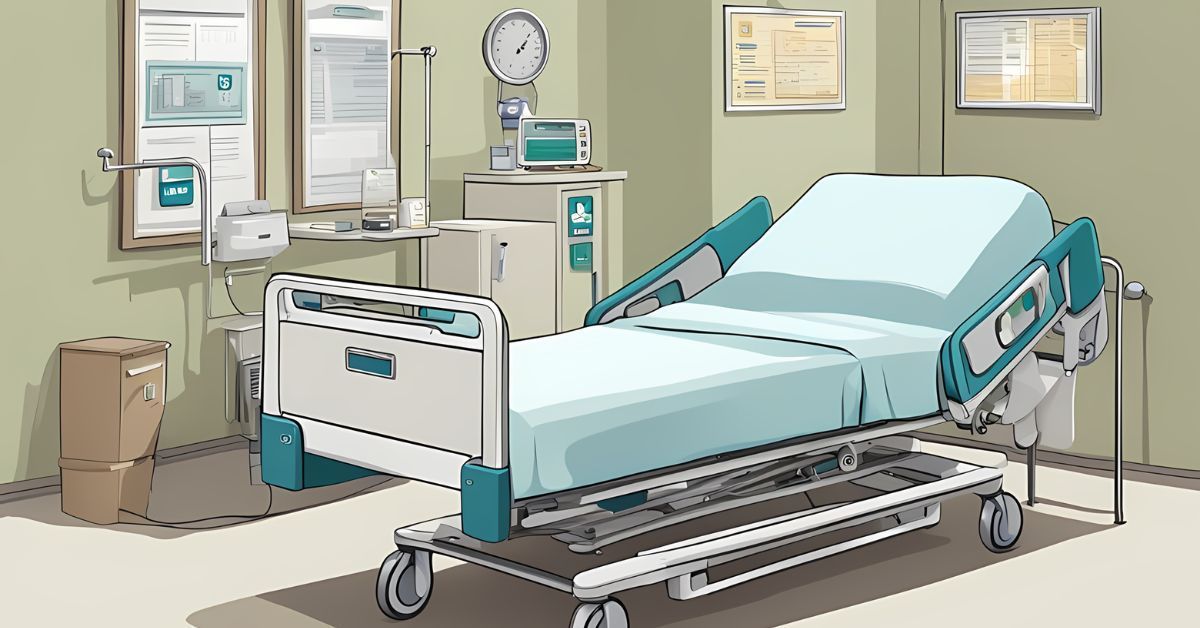How Does Medicare Work? Your Simple Guide to Health Coverage

As we age, healthcare becomes an important part of our lives. One key aspect of senior healthcare in the U.S. is Medicare.
However, the healthcare system is often confusing for most people. Nearly nine out of 10 Americans struggle with health literacy, according to the Center for Health Care Strategies.
You might be thinking: "How does Medicare Work?" If you’re having trouble grasping the concept of Medicare coverage like many others, you’ve come to the right place.

Medicare is a lifeline for those who are 65 and older. It provides comprehensive healthcare coverage that helps manage medical expenses.
To navigate its benefits effectively, you need to understand how Medicare works and what it covers. When you know the ins and outs of each Medicare part, you can make the most of it.
Key Takeaways
- Medicare helps manage medical costs for those 65 and older.
- Different parts of Medicare cover hospital stays, doctor visits, outpatient care, and prescriptions.
- Each part provides unique benefits for various health needs.
Medicare 101: An Overview of the Basics

Established in 1965, Medicare is a federal health insurance program that provides coverage to:
- People who are 65 or older.
- Younger individuals with disabilities.
- People with end-stage renal disease (permanent kidney failure requiring dialysis or a transplant).
Medicare program consists of different parts, each covering specific healthcare services. These include Parts A and B (Original Medicare), Part C (Medicare Advantage), and Part D (prescription drug coverage).
Some people also opt for Medigap (Medicare Supplement Insurance) to help pay for out-of-pocket costs. Understanding these Medicare parts is crucial to maximizing your benefits.
Medicare Part A: Hospital Insurance

Medicare Part A helps cover many services that you receive in a hospital or in a long-term care setting. This part provides coverage for hospital stays up to 60 days and can often be premium-free. Aside from free hospital stays, services like surgeries, lab tests, and doctor visits are covered.
What it covers:
- Inpatient treatment in hospitals (including semi-private rooms and meals)
- Nursing services
- Skilled nursing facilities
- Intensive care services
- Hospice care
- Home health care
- Rehabilitation and therapy services
Exceptions for Part A (Hospital Insurance)
There are a few exceptions when it comes to Medicare Part A coverage.
If you're hospitalized for an extended period, certain long-term care is covered. Medicare will pay the costs only if it is for recovery from an injury or illness and not due to a chronic or long-term condition.
In addition, Part A only covers home health care if it's medically necessary and a doctor orders it. A Medicare-certified home health agency must provide it.
Costs for Part A (Hospital Insurance)
Most individuals do not pay a monthly premium for Part A. This is often called "premium-free Part A."
To qualify for premium-free Part A, you or your spouse must have paid Medicare taxes for at least 10 years. If you don't qualify, you can still buy Part A by paying a monthly premium.
Even with premium-free Part A, there are still costs like deductibles and coinsurance.
For each benefit period, you’ll pay a $1,600 deductible for inpatient hospital care. If you stay beyond the 60-day limit, you’ll pay additional coinsurance costs. Physician services and other treatments might also incur charges not covered under Part A.
Medicare Part B: Medical Insurance

Medicare Part B is important for managing healthcare costs and ensuring access to essential medical care.
It’s designed to pay for necessary medical services, like doctor visits, lab tests, and screenings. If you need medical equipment such as wheelchairs or oxygen tanks, Part B can help cover those costs too.
For example: If you have diabetes, Part B covers diabetic screenings and test strips. This helps ensure that conditions are managed effectively without undue financial strain.
Aside from that, Part B covers outpatient care that includes services you receive without being admitted to a hospital.
Imagine you need minor surgery that doesn’t require an overnight stay. Part B will help pay for this procedure and ensure you get the treatment needed.
What it covers:
- Doctor's services
- Outpatient care
- Preventive services
- Screenings for cancer, cardiovascular disease, and diabetes
- Vaccinations (flu, pneumonia, and COVID-19 shots)
- Emergency room visits
- Mental health services (counseling)
- Durable medical equipment (DME)
Exceptions for Part B (Medical Insurance)
Keep in mind that Medicare Part B only covers preventive services and outpatient care. It does not cover routine dental services, eye exams, dentures, cosmetic surgery, hearing aids, or long-term care.
Costs and Premiums for Part B (Medical Insurance)
In Part B, Medicare beneficiaries pay premiums, deductibles, and coinsurance. The amounts are based on their income.
Your monthly premiums are usually deducted from your Social Security benefits. In 2024, the standard monthly premium is about $174.70.
However, if your income is above a certain threshold, you may pay more due to the Income-Related Monthly Adjustment Amount (IRMAA).
There is also an annual deductible before coverage starts. In 2024, the annual deductible for Medicare Part B is $233.
After you pay your deductible, you typically pay 20% of the Medicare-approved amount for services. Let’s say your outpatient surgery costs $1,000. Medicare approves that amount, which means you would pay around $200.
Medicare Part C: Medicare Advantage
Offered by private companies, Medicare Advantage is an alternative to Original Medicare. These private insurance companies must be approved by Medicare. Some of the common types of Medicare Advantage plans include:
- Health Maintenance Organizations (HMOs)
- Preferred Provider Organizations (PPOs)
- Private Fee-for-Service Plans (PFFS)
- Special Needs Plans (SNPs)
Each Medicare Advantage plan has different rules and costs. This includes rules to use care providers in their network. Part C features extra benefits and functions more like regular health insurance.
What it covers:
Medicare Advantage plans provide all of the services covered by Original Medicare. But, they often include extra benefits, like:
- Dental care
- Vision care
- Hearing aids
- Fitness programs
Some plans offer wellness programs and disease management services. For example, an HMO plan might offer discounts on gym memberships and regular fitness classes. You may also get coverage for transportation to medical appointments, which is not covered by Original Medicare (Parts A and B).
Costs for Part C (Medicare Advantage)
Premiums for Medicare Advantage plans vary depending on the plan and services you use. According to The National Council on Aging, Part C premiums range from $0 to $200. Other costs may include:
- Copayments/Coinsurance: These are out-of-pocket costs for covered drugs or services. Copayments are what you owe for every doctor’s visit. On the other hand, coinsurance is what you owe after you’ve paid your deductible.
- Deductibles: This is what you pay out of your own pocket before your coverage kicks in.
- Maximum out-of-pocket costs: This is the yearly limit on out-of-pocket expenses for covered services. Once you reach this limit, the plan pays 100% of covered services for the rest of the year. For 2024, the most you will spend out of pocket is $8,850.
Provider Networks
Since HMO plans often require you to use doctors and hospitals within their network, always check the provider networks. Choosing out-of-network health care providers could result in higher out-of-pocket costs. To get the lowest costs, always compare the costs and benefits of each plan to find what best suits your healthcare needs.
Medicare Part D: Prescription Drug Plans

Last but not least, there’s Medicare Prescription Drug Coverage. This part covers prescription drugs and helps lower your medication costs. Each plan has its own list of covered drugs, known as a formulary.
Costs and Enrollment for Part D (Prescription Drugs)
Like the other Medicare Parts, you may need to pay a monthly premium based on the plan you choose and your location.
Enrolling in Medicare Part D involves understanding the costs. These include premiums, deductibles, and late enrollment penalties. If you don't join a Part D plan when you are first eligible and have no other creditable drug coverage, you may pay a late penalty.
The penalty is added to your monthly premiums for as long as you have Medicare drug coverage. To avoid penalties, sign up when you are first eligible.
Who Is Eligible for Medicare Coverage?
To qualify for Medicare, you need to be 65 or older and a US citizen or permanent legal resident for at least five continuous years.
Younger people can qualify if they have received Social Security Disability Insurance (SSDI) for 24 months. Or, if they have conditions like Lou Gehrig's disease (ALS) or End-Stage Renal Disease.
Let’s say you're 66 and don't have any other health insurance. Enrolling in Medicare ensures you get necessary medical care without hefty out-of-pocket costs.
Similarly, if you're 50 and have been receiving SSDI benefits for two years, then you're automatically enrolled in Medicare.
You may consult with a financial advisor specializing in Medicare to learn more about eligibility criteria.
Medicare Enrollment Details

When you’re familiar with the Medicare enrollment periods, you won’t miss out on benefits. Here are the key periods to remember:
Initial Enrollment Period (IEP)
This is your first opportunity to enroll in Medicare. This period begins three months before your 65th birthday, includes the month you turn 65, and ends three months after. Make sure you mark your calendar and start the process early. You can sign up online, by phone, or in person.
General Enrollment Period (GEP)
If you missed your Initial or Special Enrollment periods, you could sign up during GEP. This period runs from January 1 to March 31 each year. However, you may incur a late enrollment penalty if you enroll during this period.
Special Enrollment Period (SEP)
You may still sign up for Medicare outside the standard periods like IEP and GEP. You can also qualify for SEP if you move, lose other health coverage, or face certain life events.
Once qualified for SEP, Medicare gives you an eight-month window to enroll without a penalty.
Annual Enrollment Period (AEP)
Also known as the Open Enrollment Period, this period allows you to make changes to your Medicare coverage. It usually runs from October 15 to December 7 each year.
Supplemental Coverage
Supplemental coverage can be a lifesaver for managing the costs that Medicare doesn’t fully cover. Medigap policies and Medicare Savings Programs are key options available to Medicare beneficiaries:
Medigap Policies
These are designed to fill the gaps in original Medicare. They cover expenses like co-insurance, copayments, and deductibles. To buy Medigap, you need to have both Parts A and Part B. These plans can significantly reduce your out-of-pocket costs.
There are different Medigap plans, labeled A through N. Plan benefits vary, so it's important to compare them. For example, Plan F covers many expenses but is no longer available to new Medicare enrollees.
Imagine you have a $1,200 hospital bill. Without Medigap, you'd pay a big portion out-of-pocket. But with Medigap Plan G, most of that bill could be covered, easing your financial burden.
Medicare Savings Programs (MSPs)
These programs are designed to help people with limited income. MSPs pay for Medicare premiums and sometimes coinsurance and copayments. There are four main types of MSPs:
- Qualified Medicare Beneficiary (QMB)
- Specified Low-Income Medicare Beneficiary (SLMB)
- Qualifying Individual (QI)
- Qualified Disabled and Working Individuals (QDWI)
For example, if you qualify for the QMB program, it can cover your Parts A and Part B premiums and help with deductibles and coinsurance.
This is especially helpful if your income is limited, as it reduces your out-of-pocket expenses.
Eligibility for MSPs depends on your income and resources. If you think you might qualify, contact your state Medicaid office. These programs can offer significant savings, making healthcare more affordable.
Schedule a Consultation With Us
Medicare can be pretty confusing, right? But don't worry, getting a grip on the basics can make a big difference when it comes to choosing your healthcare coverage.
At Leonard Financial Solutions, we understand how you feel. That's why we're here to simplify things for you. We are knowledgeable and experienced in all things Medicare in New Jersey.
Booking a consultation with us means you won’t be alone in this. We’ll help clear up any confusion and help you find the best coverage without the stress.
Don't navigate Medicare by yourself — let us help you secure your healthcare future. Contact us today, and take the first step toward a wonderful retirement.
Get a Free Consultation
At Leonard Financial Solutions, we're committed to making your financial planning straightforward and stress-free.
Contact us today to see how we can help you save time and money while securing your future.










